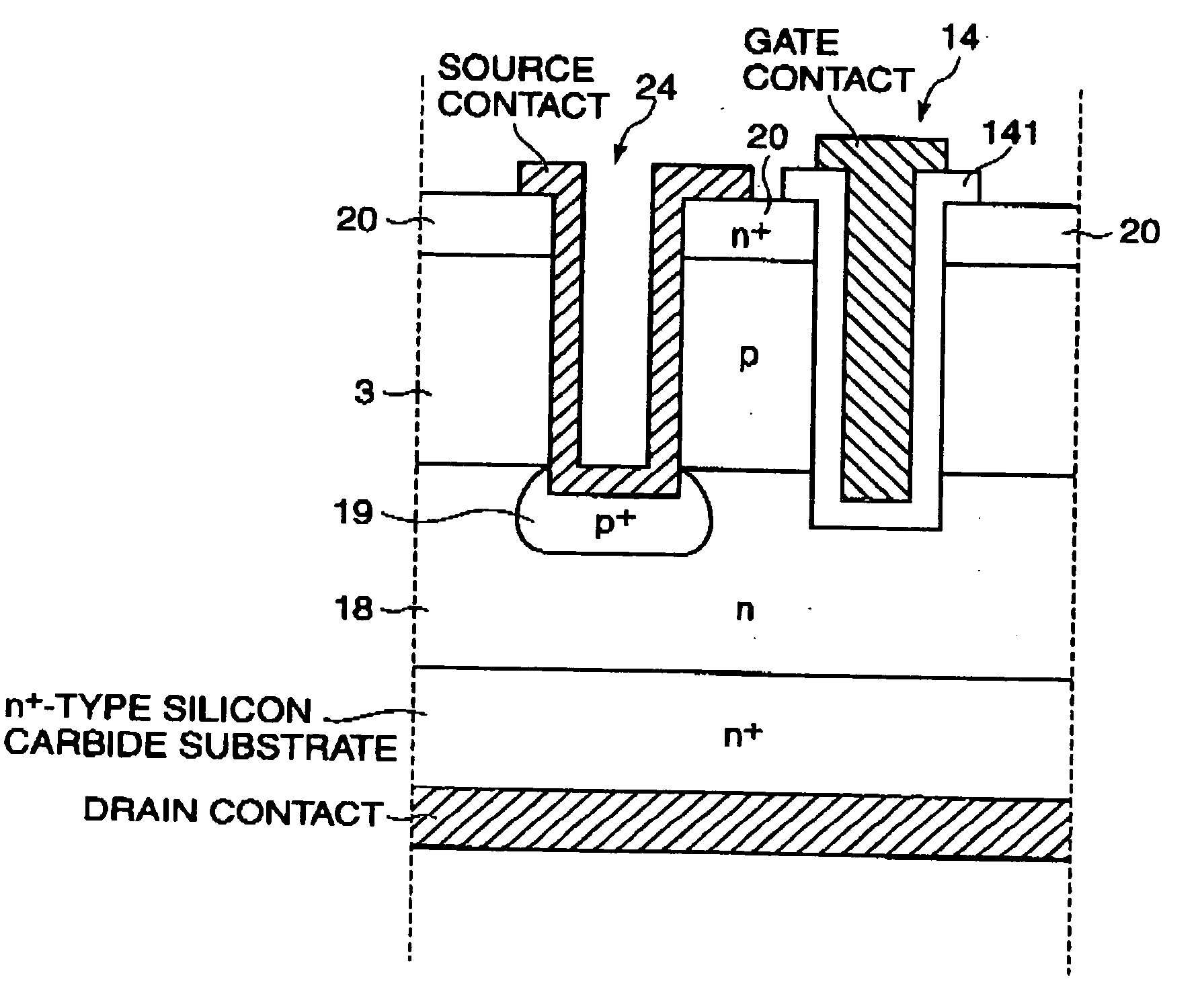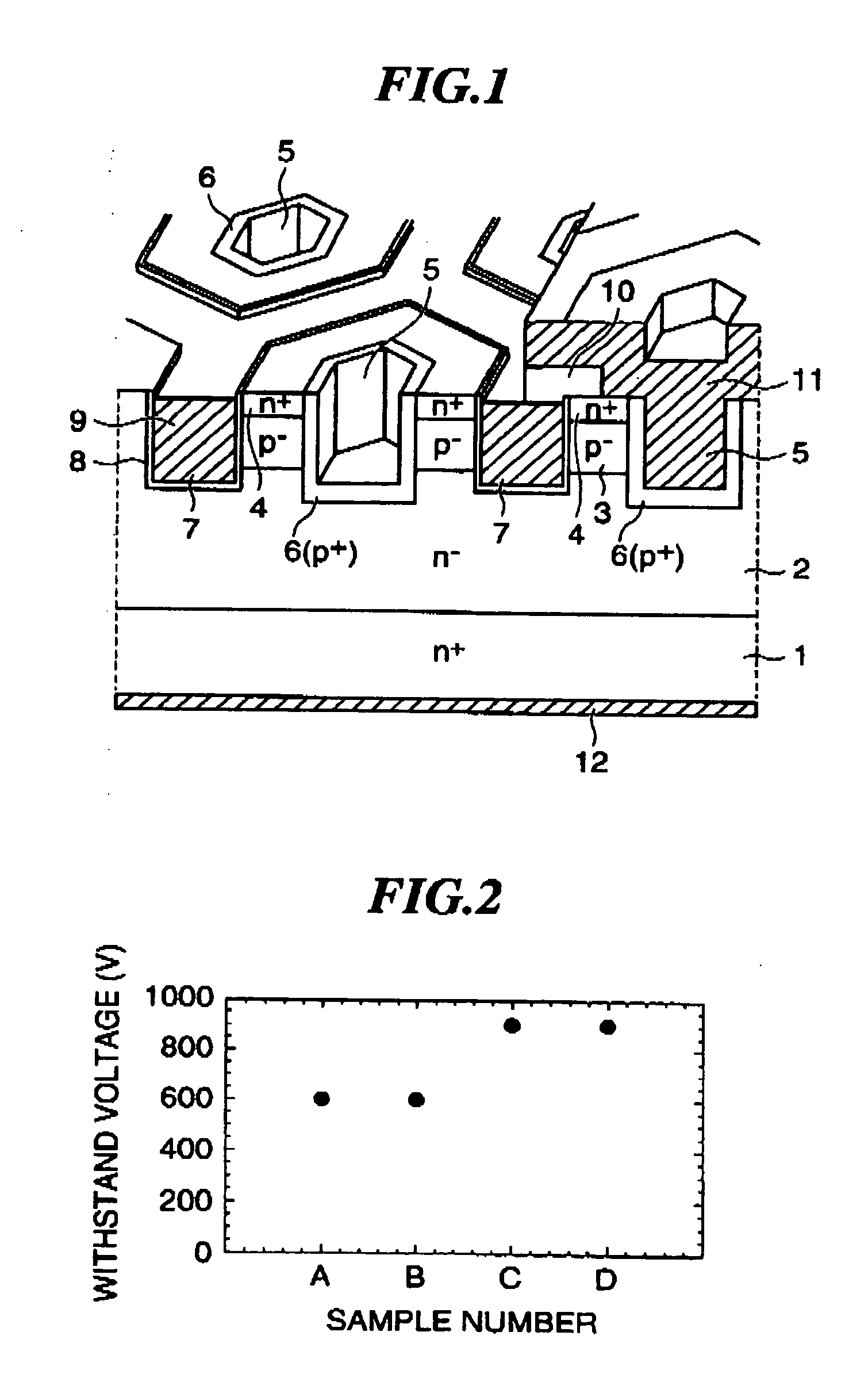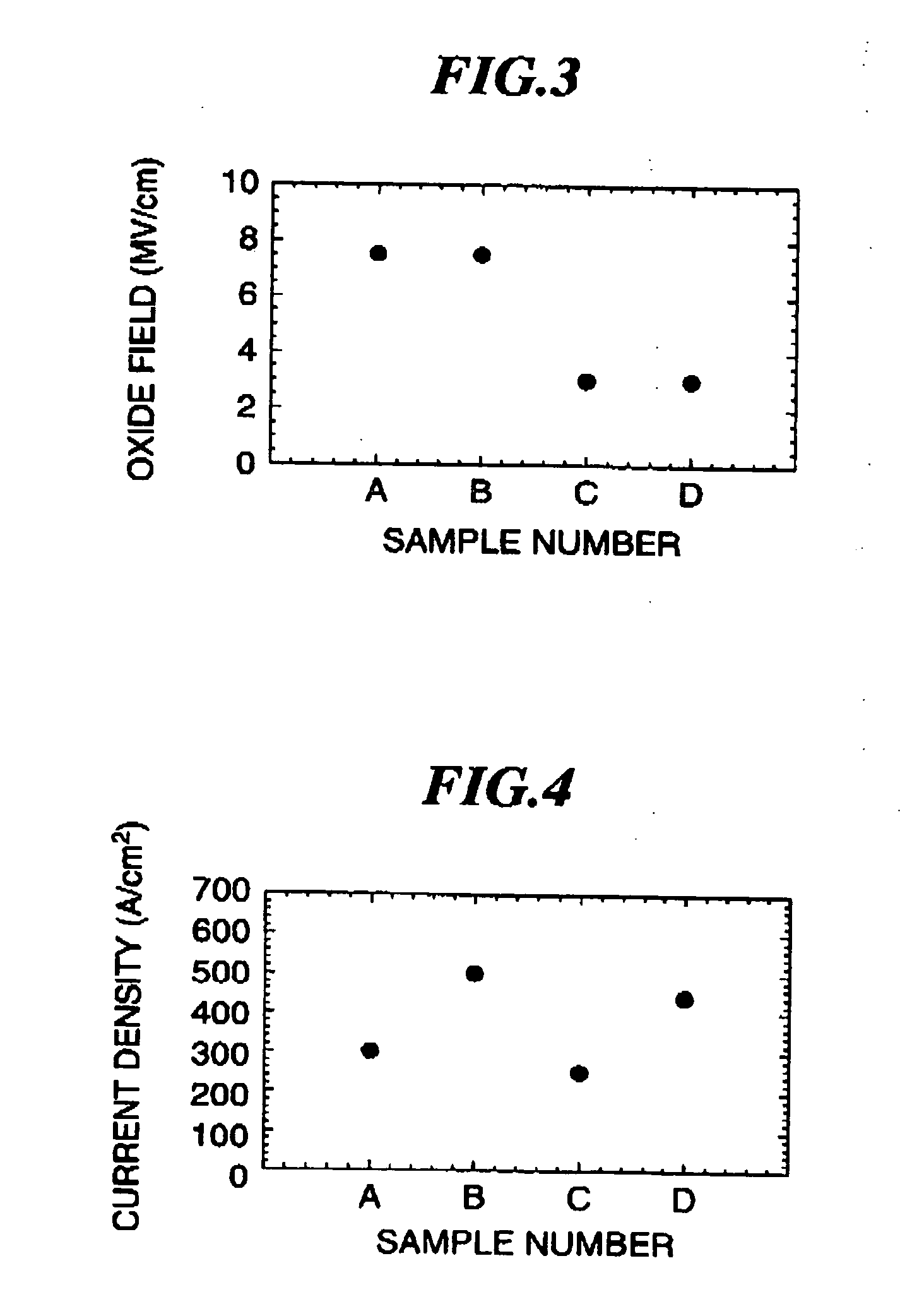Silicon carbide semiconductor device
a silicon carbide and semiconductor technology, applied in the direction of semiconductor devices, basic electric elements, electrical apparatus, etc., can solve the problems of low breakdown field of silicon carbide, inability to achieve insufficiently high withstand voltage in the trench mosfet, and decrease in current density, so as to reduce the area of the body region, reduce the dead space in the on state, and facilitate the effect of channel mobility
- Summary
- Abstract
- Description
- Claims
- Application Information
AI Technical Summary
Benefits of technology
Problems solved by technology
Method used
Image
Examples
Embodiment Construction
[0028]FIG. 1 shows the structure of a silicon carbide trench MOSFET of the present invention. An n−-type drift layer 2 having thickness of from 5 to 30 μm that is doped with nitrogen of 3×1015 to 3×1016 cm−3 and made of 4H-SiC is deposited on a low-resistance n+-type substrate 1 that is made of 4H-SiC and has a C-plane as a principal surface. The low-resistance n+-type substrate 1 may be a 4H-SiC substrate that has a principal surface with an orientation inclined from the (000-1) plane to one degree or less.
[0029]Further, p-type base layers 3 having thickness of from 1 to 3 μm that are doped with aluminum of 5×1016 to 2×1018 cm−3 and made of 4H-SiC are deposited on the type drift layer 2. The p-type base layers 3 may also be formed by an ion implantation technique.
[0030]N+-type source regions 4 doped with phosphorus of approximately 2×1020 cm−3 are formed on the surfaces of the p-type base layers 3, and first trench grooves 5 that reach the n−-type drift layer 2 are formed in the ce...
PUM
 Login to View More
Login to View More Abstract
Description
Claims
Application Information
 Login to View More
Login to View More - R&D
- Intellectual Property
- Life Sciences
- Materials
- Tech Scout
- Unparalleled Data Quality
- Higher Quality Content
- 60% Fewer Hallucinations
Browse by: Latest US Patents, China's latest patents, Technical Efficacy Thesaurus, Application Domain, Technology Topic, Popular Technical Reports.
© 2025 PatSnap. All rights reserved.Legal|Privacy policy|Modern Slavery Act Transparency Statement|Sitemap|About US| Contact US: help@patsnap.com



